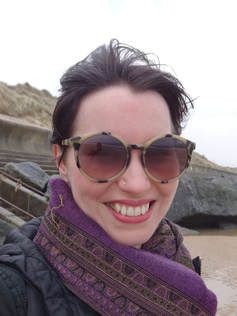My Writing the Future experience
I heard about Writing the Future through my friend Kate, who works in health. "You like writing," she said. "Why don’t you enter this?" A short story competition about healthcare in 2100? It was an intriguing topic: 83 years from now, what kind of world would our descendants inherit?
My brain started whirring. (The £10k prize and free entry didn’t hurt, either!)
Google was my first port of call – I wanted to find out what healthcare professionals were saying about future trends. Certain topics kept cropping up. The increasing personalisation of healthcare, making use of smart, wearable tech. The necessary evolution of the NHS from a largely reactive institution to a preventative one. Several articles on the future of fertility – including the possibility of male pregnancy in the not-too-distant future.
This piqued my interest, and I started thinking around the topic. How would advances in bioengineering change fertility, childbirth, and parenthood? Could men end up having babies? If so, what would this do to society? What would happen if a potent combination of circumstances – an ageing population, declining childbirth rates, and the possibility of successful womb implants – destabilised the categories of ‘male’ and ‘female’ as we traditionally understand them?
And how on earth would you sell the idea of childbirth to a group of people who’d never had to do it? Let’s face it, it’s not the most appealing of activities.
So, you’d better have a very good ad campaign.
And you’d better be prepared for a certain amount of backlash.
I invented the character of Eva, an ambitious agency creative with her own agenda. I made notes on the world of my story, possible plot points, and various characters. I tried it from a few perspectives: a man hoping to get pregnant, a rogue doctor determined to stamp out Male Motherhood, and the first ever Male Mother. But it worked best when the story was Eva’s.
How would advances in bioengineering change fertility, childbirth and parenthood? Could men end up having babies?
There was just one problem. Things got wordy. It turned out there was a lot to say about Eva – her background, ambition, motivations – and barely any of it was going to fit into the 3,000 words we were limited to. A new strategy was called for.
I decided on a series of emails. Short, snappy, quick to type and quicker to send, emails straddle the fine line between public and private communication. They proved an ideal way to get across several different voices and a lot of back story and information, all within a few pages.
When I heard my entry had made the Writing the Future shortlist, I was over the moon. It was an honour to see ‘Project Seahorse’ up there among such inventive stories, and fascinating to read such wildly different glimpses into the future.
It was also a real pleasure to meet some of the other writers at the awards ceremony in October. I was a little nervous beforehand, but I needn’t have been – it was a wonderful evening. Huge congratulations to Elisabeth Ingram Wallace for her winning story, ‘Opsnizing Dad’ – a meditation on the value we place on family, memory and legacy, and laugh-out-loud funny at points, too.
The whole Writing the Future experience was brilliant and it was lovely to go home with the shortlisted stories in a beautifully designed anthology. Moreover, in some small way, I feel I’ve been drawn into the conversation about the future of healthcare – and I’ll be following where it goes with great interest.
Read Project Seahorse and the other shortlisted Writing the Future stories.
 Hannah Harper14 November 2017
Hannah Harper14 November 2017
